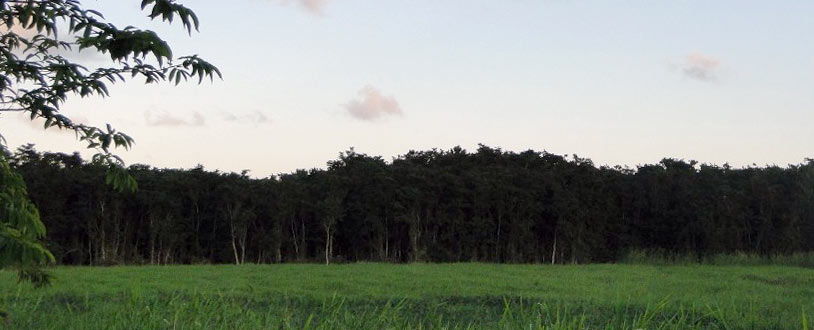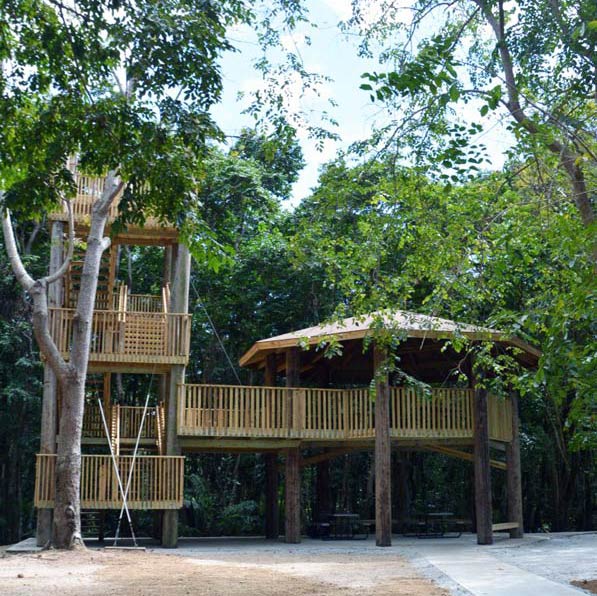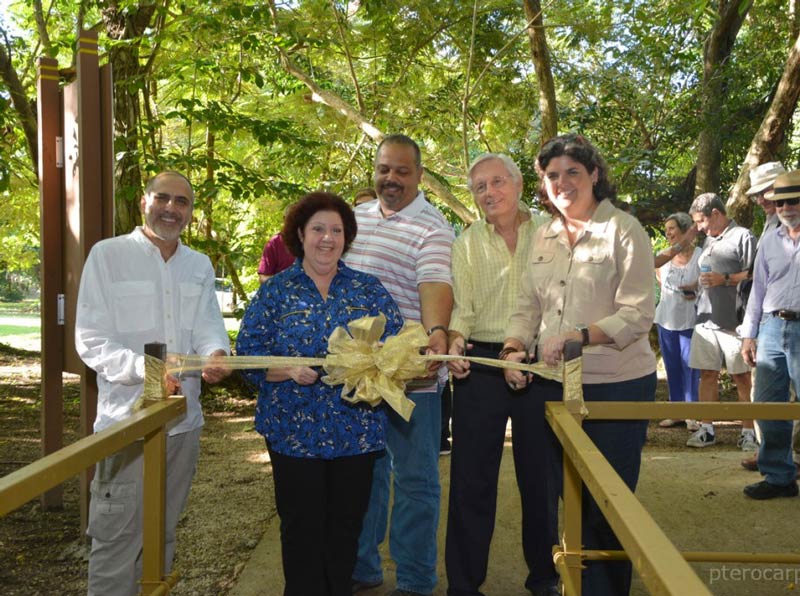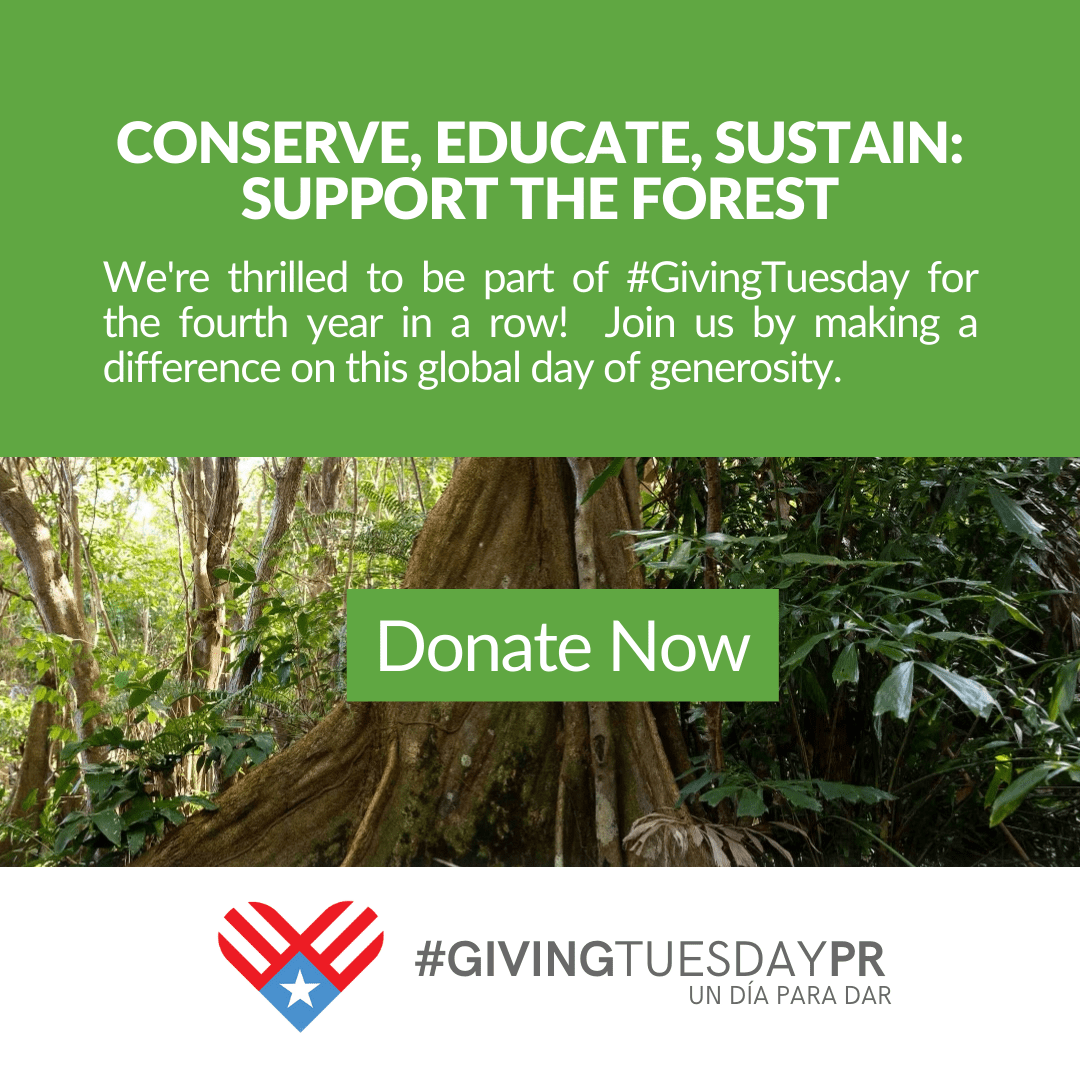The Pterocarpus Forest Project
A Unique 51-Acre Swamp Forest
The Pterocarpus Forest nature preserve at Palmas del Mar is a unique 51-acre swamp forest, opened to the public in March 2013. This is one of the largest remaining swamp forests in Puerto Rico and serves as a habitat for 113 species of flora and 107 species of fauna, of which 13 are considered endemic, and 73 species of fungi
This Forest grows in an area permanently flooded by fresh water and the predominant species in this type of wetland is the Pterocarpus Officinalis tree (“Dragonsblood Tree”), commonly known in Spanish as palo de pollo because of the shape of its aerial roots. The tree may grow more than 65 feet tall, with large aerial roots that allow it to grow in flooded soil.

Once common in Puerto Rico’s coastal wetlands, the remaining Pterocarpus forests are few, widely inaccessible, fragmented, and in danger of disappearing altogether.
The Forest restoration project, including the construction of a new 3/4-mile, elevated Boardwalk and the establishment of permanent conservation, education, and research programs is an undertaking of the Palmas del Mar Homeowners Association (PHA) and the Friends of the Pterocarpus Forest (incorporated as the nonprofit PHA Pterocarpus Forest, Inc.).
It is a community effort that represents an opportunity to preserve a unique, increasingly rare ecosystem, and make it available so that the public, in general, can enjoy this invaluable recreational, educational and ecological resource now and in the future.
The Pterocarpus Forest History
A Palmas del Mar Homeowners’ Association (PHA) Conservation Project.
The Pterocarpus Forest project has its roots in the conservation goals of the Palmas del Mar Homeowners’ Association (PHA). The Association has long been an advocate for conservation and maintenance of its more than 200 acres (809,000m2) of green areas, including beaches and lakes.

Through annual maintenance fees paid by its members, and in coordination with the Puerto Rico Conservation Trust, U.S. Fish & Wildlife Service (F&WS), and the Puerto Rico Department of Natural Resources (DNRA), PHA has restored or maintained hundreds of acres of coastal and green areas, including forests.
In fact, through its Habitat Conservation Plan (first entered into with the F&WS in January 2003) PHA protects endangered sea turtles nesting in the coastal area of Palmas.
By the end of the 1990s, after the devastating passage of Hurricane Georges, the Pterocarpus Forest became an abandoned, distressed woodland. Invasive weeds and grasses and damaging vines had overtaken the forest, posing a grave threat to its very survival.
Within the impenetrable forest were the rotted remnants of a mile-long wooden boardwalk.
The Forest Acquisition & Restoration
In 2010, the Palmas del Mar Homeowners’ Association (PHA) acquired the land and, with technical advice and support from the Puerto Rico Conservation Trust and the collaboration of the Fish & Wildlife Service, developed a plan for its restoration.
The Forest, after hurricane Georges, was not reopened to the general public until the first sections of the boardwalk were in place in 2014. The adjacent observation tower and gazebo were completed and opened to the public in February 2015.
The gazebo serves as the Forest’s Visitor Center. The open-air facility has ample space for educational talks and meetings as well as social gatherings.


The Pterocarpus Forest
Sustainability and Vision

Donations
With donations from friends of the Forest, foundations, corporations, government agencies, and other organizations such as Para la Naturaleza, PHA has completed the cleanup of the Forest and created a 3/4mile boardwalk that takes visitors inside the Forest allowing them to explore the environment at close range.

Signage
Interpretive signage about the nature and functions of Pterocarpus forests and the forest’s flora and fauna have been installed at numerous stations inside the Forest.

outdoor classroom
Educational materials have been created as well. Also, an information/activity gazebo and a bird observation tower have been built at the entrance to the Forest.
The Educational Goals of the Pterocarpus Forest Preserve are to:
Teach the concepts, interactions and value of the increasingly scarce Pterocarpus forest, herbaceous wetland ecology, and their flora and fauna.
Explain the role of Pterocarpus swamp forest in water quality, wildlife habitat and biological productivity.
Facilitate conservation and create an appreciation for the Pterocarpus ecosystem and Puerto Rico’s natural resources.

